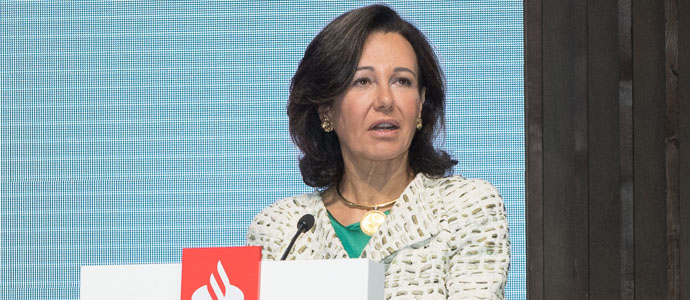Santander: Digital lenders have unfair regulatory advantage post-pandemic
Santander’s executive chairman, Anne Botín, tells the Financial Times that “banks cannot deploy their balance sheets to their full potential” under current regulations.

“Large tech companies are becoming lending platforms without having to comply with most banking regulation,” says Botín
Whilst banks have been allowed to use their capital “buffers” introduced after the financial crisis, the industry fears regulators will ask incumbents to build them back up post-pandemic.
Unfair advantage
As a result, “regulation now favours tech companies that intermediate financial services over banks”.
Botín puts a particular emphasis on lending. The space has enjoyed competition from alternative, digital lenders which aren’t held to the same capital requirements as banks.
“Large tech companies are becoming lending platforms without having to comply with most banking regulation,” she says.
“Their role, although still relatively small overall, is growing.”
Rise of digital lenders
Botín cites Bank for International Settlements, which suggests fintech and Big Tech credit reached $795 billion globally last year.
China, the US and the UK are the largest markets for fintech credit, according to the report.
Whilst Big Tech credit is growing fast in China, Japan, Korea, and Southeast Asia, as well as some countries across Africa and Latin America.
Banco Santander makes roughly 41% of its profits off Latin America. The bank has also invested in four Latin American fintechs to date, including alternative lender, a55.
Re-imagining regulation
“The pandemic will only entrench the digital players,” affirms Botín. This prompts the executive chairman to call for a regulation “reset”.
She wants regulators to reassess how banks use capital buffers, maintain capital requirements, and calculate the risk weightings on their assets.
In November, Chinese regulators clamped down on Big Tech lender Ant Financial, preventing it from launching its back-breaking $35 billion initial public offering (IPO).
Their new draft regulations required Ant to provide at least 30% of the funding its loans rest on. At the time, Ant funded just 2% of its loan balance sheet. The rest came from other sources, including banks.
Whilst digital lenders meet calls to fund more of their loan balance sheets, the likes of Botín want banks’ capital requirements to relax.
That way, incumbents will have more money for new lending – hence armed with more ammunition to take on digital disruptors.
Democratising data
Botín also mentions that banks deserve access to technology companies’ data. She indirectly cites the Second Payments Directive (PSD2), which requires banks to feed customer data to third parties.
“[The] payments requirement should apply to data held by every sector, including tech companies,” she says.
This echoes the sentiment of ING’s CEO, Steven Van Rijswijk, who said at Sibos last October that regulators need to offer banks an equivalent to PSD2.
“We strongly advocate that there needs to be a level playing field,” Van Rijswijk said.
“You see with the new regulation, new platforms and open banking, that a number of competitors are entering this space.
“They get access to our customers’ data, and at the same point in time, they can use their own data as well which they get from customers.”
But for banks, PSD2 only works one-way at present. This is why Van Rijswijk is “strongly advocating” that regulators come up with an equivalent for banks. That way the data flow can go both ways.
Read next: Sibos 2020: ING’s CEO urges regulators to give banks a PSD2 equivalent











































